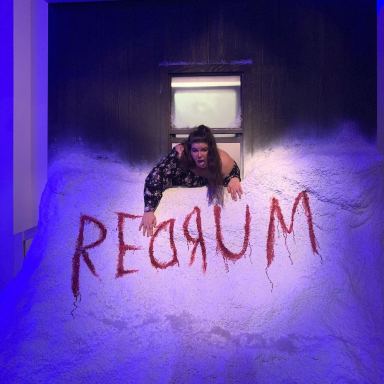36 Spooky Facts and Trivia About ‘Cloverfield’ (2008)
Come learn about all the intresting trivia and behind the scenes facts of Cloverfield.
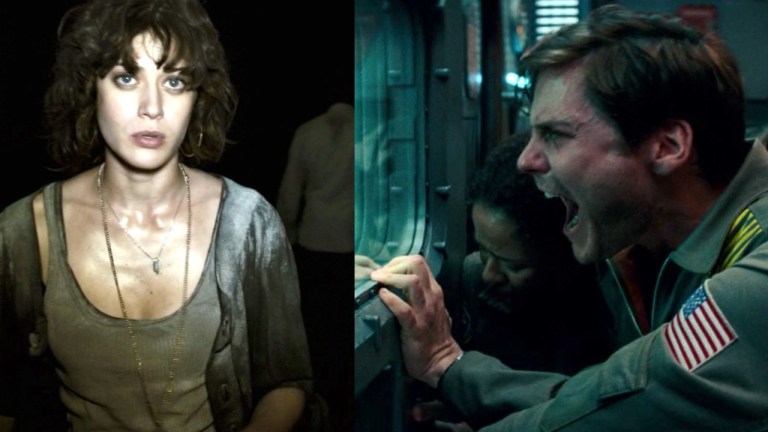
Table of Contents
Cloverfield is a 2008 found-footage horror film by director Matt Reeves and produced by J.J. Abrams. The basic plot involves six Manhattan residents whose farewell party for a friend is disrupted when a giant monster invades the island and starts causing massive destruction, which is only brought to a halt when the US military drops a nuclear bomb on New York City.
The film took in over $170 million on a budget of about $25 million. Some attribute its success to public anxiety over the World Trade Center attacks of 9/11.
Roger Ebert gave the film a mostly positive review: “Godzilla meets the Queasy-Cam in ‘Cloverfield,’ a movie that crosses the Monster Attacks Manhattan formula with ‘Blair Witch.’…all in all, it is an effective film, deploying its special effects well and never breaking the illusion that it is all happening as we see it.”
Why Was it Called ‘Cloverfield’?
1. The original 2007 teaser trailer for the film was shown before the debut run of Transformers and featured no title.
2. The original codename for the movie was “Cloverfield,” which was actually the name of the freeway exit that producer J. J. Abrams would take to get to his office in Santa Monica, CA.
3. Director Matt Reeves said that the trailer caused such a buzz that word got out that the film was going to be called Cloverfield, but then “That excitement spread to such a degree that we suddenly couldn’t use the name anymore. So we started using all these names like Slusho and Cheese. And people always found out what we were doing!”
4. “Slusho” became a codename for a while because not only does the Jason character wear a Slusho! T-shirt throughout the film, it was a drink in producer J.J. Abrams’s 2001 show Alias.
5. Another one of the movie’s working titles was 1/18/08, which many saw to be an evocation of the tragic events in Manhattan of 9/11/01.
6. Advance prints were sent to some movie theaters with the title Bertha.
7. Matt Reeves said that they finally decided to go back to Cloverfield to reflect the fact that the only way the government got rid of the monster was by dropping a nuclear bomb, a project they named “Cloverfield” due to the fact that clovers are the first plants to grow on ground that has been devastated by a nuclear attack.
8. In Japan, the film’s subtitle was Hakaisha, meaning Destroyer.
The Monster
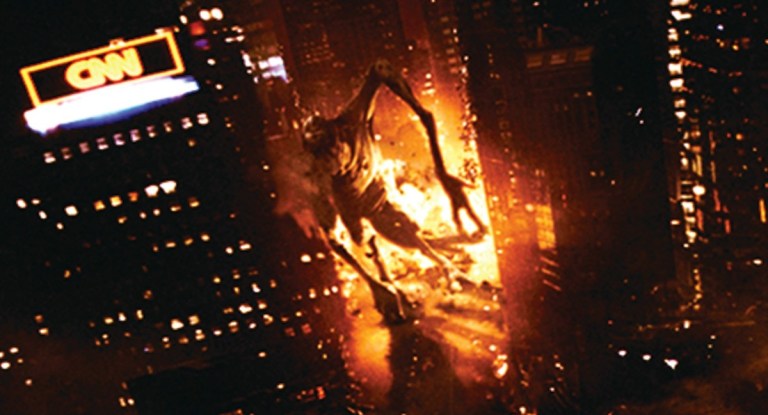
9. J.J. Abrams said the idea for a giant monster rampaging through a city came to him when visiting a toy store in Japan and saw a doll of Godzilla, the famed giant dinosaur that stomped through Tokyo in a series of movies.
10. Designer Neville Page says that the monster is a baby that has been unleashed into a new environment. Its rampage is caused by the fact that it’s “spooked’ and desperately searching for its mother due to “separation anxiety.”
11. Many fans claim that there are actually two Cloverfield monsters. But director Matt Reeves says that’s merely a result of lighting and different camera angles. The production crew always referred to it as “the monster” instead of “the monsters.” And at one point, a military official says, “Whatever it is, it’s winning,” signaling that there’s only one monster.
12. In a homage to other giant film monsters, very brief flashes of stills from 1933’s King Kong, 1953’s The Beast From 20,000 Fathoms, and 1954’s Them! are shown, but they disappear so quickly that the viewer only perceives them subliminally, if at all.
13. Eric Leven, the film’s visual-effects coordinator, refers to the monster as “Clover.”
14. Some fans have taken to calling the monster things such as “MGP,” “Clovie,” and “Darwin.”
15. Film critic James Berardinelli of the blog Reel Views stated that “The movie follows the Jaws rule that monsters are usually more intimidating when they are shown infrequently and only in brief glimpses.”
16. The monster’s total screen time was two minutes and thirty-seven seconds.
The Filming Process
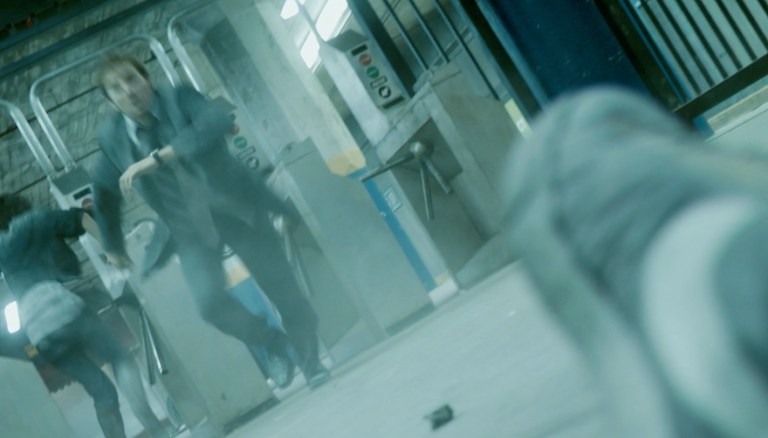
17. Cloverfield was shot over 34 days in New York and on soundstages built in Los Angeles. The actors shot some of the film. All of it was shot with handheld cameras.
18. The street battle ostensibly on the streets of New York was shot in LA.
19. The scene on the Ferris wheel, which is last to appear in the movie, was shot on the first day of filming.
20. The scene inside the apartment of Beth’s parents, which is the first to appear in the movie, was shot on the last day of filming.
21. The first of all the footage shot was for the teaser trailer, although none of that appears in the movie itself.
22. Matt Reeves says that a lot of the film’s fun and realism came from the idea that it was all filmed with handheld cameras by the participants in the tragedy.
23. Before credits, the film runs for 80 minutes, which was the length of a MiniDV tape, which was a popular camcorder format at the time of the filming.
24. Due to the shaky handheld effect, many theaters posted signs warning that viewers may experience motion sickness.
25. Over one hundred people reportedly left theaters as a result of dizziness and motion sickness.
The Statue of Liberty’s Head
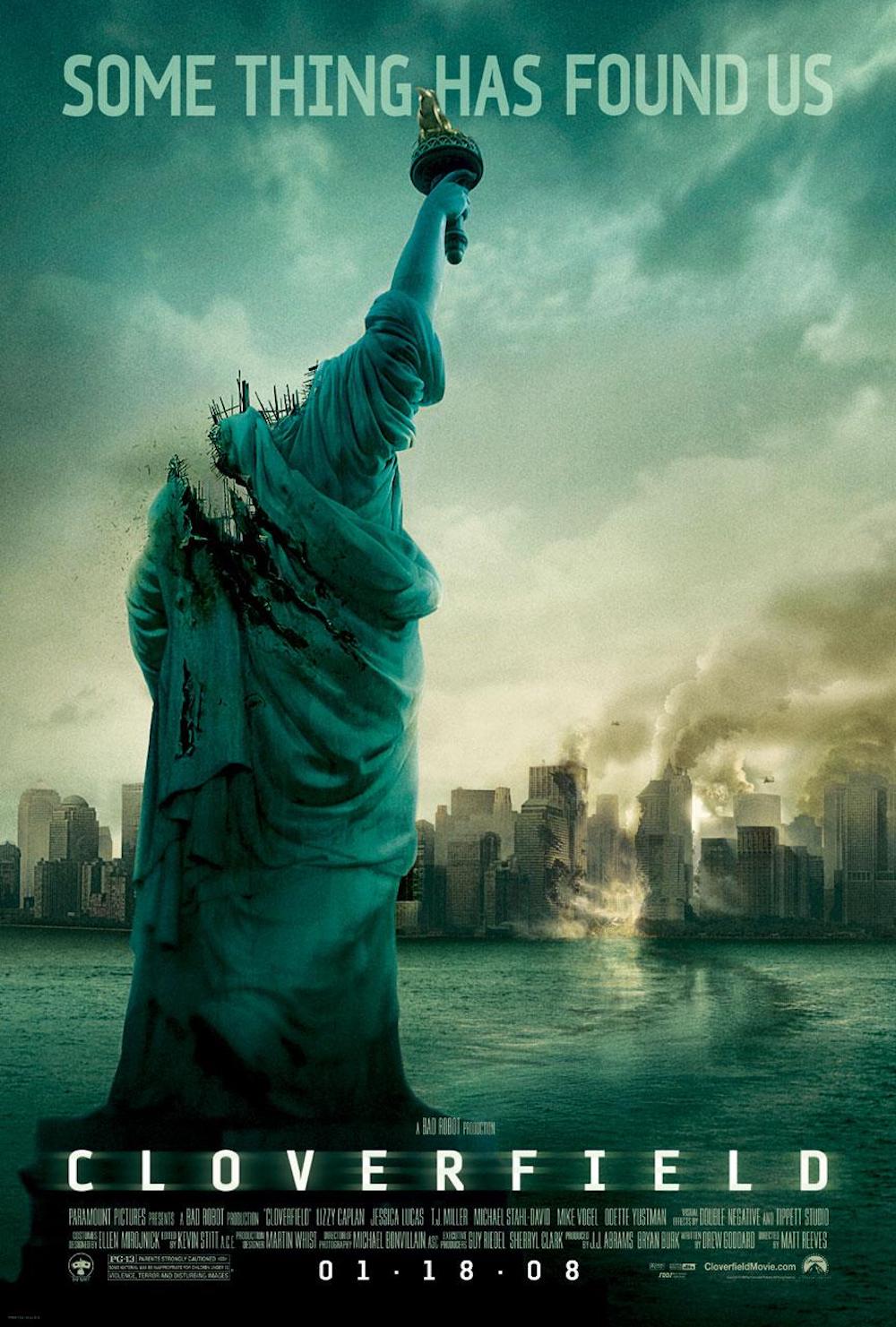
26. The official movie poster shows Manhattan smoldering in the background while a headless Statue of Liberty faces the city in the foreground.
27. In the teaser trailer, one shot shows the Statue of Liberty’s head in the streets of New York. Although the head was rendered proportionally to its real size, people complained that it looked too small, so the special-effects team magnified it to 50% larger than its actual size.
28. At a crucial scene in the film, the Statue of Liberty’s head comes crashing onto a New York street. This was inspired by the same image in the poster for John Carpenter’s 1981 film Escape From New York.
29. When the head falls down onto the street, a voice is heard screaming “Oh my God!” It’s the voice of producer Bryan Burk.
Sound Effects

30. Like a few other horror movies, such as Alfred Hitchcock’s The Birds, Cloverfield has absolutely no musical score—that is, until about 90 seconds into the final credits, when a musical theme song finally plays.
31. In the opening scene at the party, there is music playing and extras are talking in the background. But the music was dubbed in, as was the party chatter, because the extras were silently pretending to talk.
33. When something ominous or terrifying is about to happen, filmmakers dubbed in sounds such as creaking buildings or loud stomping sounds to build tension.
33. Toward the end, air sirens wail, signaling that a nuclear bomb was about to explode. This was Steven Spielberg’s idea.
34. At the film’s very end, right after the closing credits and the theme song has played, a mysterious radio-broadcast voice is heard. It’s the voice of director Matt Reeves. What he says is indecipherable. That’s because it’s played in reverse. When you play it backwards, you can hear him saying “It’s still alive.”
The Cloverfield Universe
35. If you play The Cloverfield Paradox (2018) at the same time as Cloverfield (2008), at the exact moment the particle accelerator fires in The Cloverfield Paradox, the monster appears in Cloverfield.
36. A Quiet Place (2018) was considered for placement in the Cloverfield universe.
